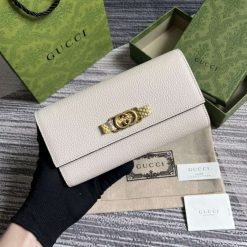Fake copyright vs. Real copyright: Can You Tell the Difference?
Fake copyright vs. Real copyright: Can You Tell the Difference?
Blog Article
copyright, a title synonymous with luxury and exclusivity, has continued to dominate the international fashion market for decades. With prices usually working in to thousands of pounds, the allure of owning copyright pieces becomes a far-reaching dream for many. Enter fake copyright items—cheaper solutions that maintain to copy the true luxury brand's artistry and appeal. But is buying imitation copyright truly worth every penny?
The Value Appeal of Replicas
One of the very persuasive arguments for purchasing reproduction copyright items is their cost. While a geniune copyright handbag may possibly set you back well over $2,000, a reproduction might charge as low as $50 to $300. For consumers on a tight budget, the cost contrast is undoubtedly attractive. According to a written report by the Organisation for Financial Co-operation and Development (OECD), bogus things, including replicas of designer models, accounted for 3.3% of world wide deal in 2019—evidence of continuous need pushed by lower prices.
Nevertheless, as the upfront economic savings seem substantial, the general cost-benefit percentage might not always suggestion in favor of replicas.

Quality Factors
Genuine copyright products present exceptional quality, advanced components, and thorough awareness of detail. These characteristics contribute for their large value stage and longevity. On another give, many replicas fail to meet these standards. Buyers usually find that imitation objects start to break down following a short period. Threads unravel, equipment tarnishes, and replica leather peels—leaving consumers with a short-lived buy that lacks the reliable experience and toughness of the true thing.
Fake Data in the fashion industry from the International Brand Association (INTA) more show this quality discrepancy. Study reveals that nearly 75% of buyers of phony goods stated unhappiness with the performance and construct of these purchased items.
Ethical Implications
Replicas have ethical dilemmas as well. copyright it self has been vocal concerning the bad impact phony things have on the fashion industry. Counterfeiting plays a role in billions of pounds in failures for brands annually and affects the livelihoods of builders, manufacturers, and employees. Additionally, the generation of bogus products usually does occur in unregulated factories, raising considerations about bad work problems and environmental pollution.

Resale Value and Sustainability
Unlike reliable copyright pieces, which can keep or even escalation in price over time, reproductions hold no resale worth. Investing in a genuine item can be considered an investment in both style and financial price, whereas reproductions generally find their way into landfills, causing the growing problem of fast fashion waste.
Final Thoughts
While the cost of imitation copyright products and services may be attractive, the trade-offs in quality, ethics, and sustainability are significant. Authentic copyright parts promise a long-lasting investment, an expression of exclusivity, and position with honest generation chains. For a lot of consumers, saving for genuine or discovering pre-owned luxury markets will be the better choice.
Report this page